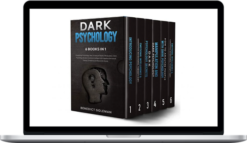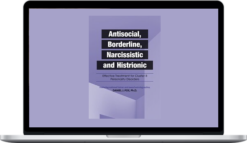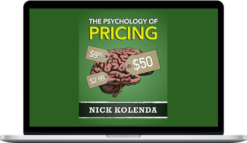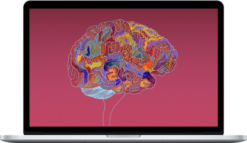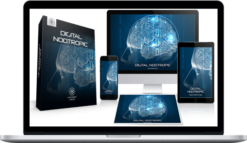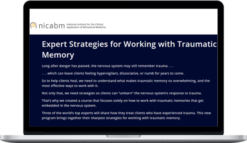NICABM – Pain Reprocessing Therapy And The Neuroscience Of Pain Reversal
$97.00 $39.00
»Delivery: Within 21 days
Description
NICABM – Pain Reprocessing Therapy And The Neuroscience Of Pain Reversal
How to Integrate Pain Reprocessing Therapy to Help Reduce (or Eliminate) Your Client’s Chronic Pain
There’s been a powerful shift in how psychotherapists can treat chronic pain.
Recent findings show that we can do more than just help clients manage their pain . . .
. . . we may be able to significantly reduce it or even help them live pain free.
The key lies in working with pain-processing loops that become stuck in the brain – and there’s a novel treatment model designed to help you do just that.
That’s why we put together this brand-new workshop on . . .
What You’ll Learn In Pain Reprocessing Therapy and the Neuroscience of Pain Reversal
In this workshop, Howard Schubiner, MD will do a deep dive into the neuroscience of Pain Reprocessing Therapy (PRT). He’ll walk through how you can use it to help clients reduce or eliminate chronic pain symptoms.
You’ll hear:
- A step-by-step breakdown of the PRT treatment model
- Case studies to help you integrate PRT into your work
- An assessment process to help you gauge your client’s pain experience
- Specific language to validate your client’s pain and explain how PRT can help them “unlearn” their symptoms
- How PRT can help interrupt pain-processing loops that become stuck in the brain
- Why many chronic pain conditions are potentially reversible
Course Instructor: Howard Schubiner, MD
Howard Schubiner, MD is an internist, Clinical Professor at the Michigan State University College of Human Medicine, and author of more than 100 publications in scientific journals and books.
He lectures regionally, nationally, and internationally, and has consulted for the American Medication Association, the National Institute on Drug Abuse, and the National Institute on Mental Health.
Dr. Schubiner has collaborated extensively with colleagues such as Mark Lumley, Tor Wager, Yoni Ashar, and Alan Gordon to develop two novel psychological treatments for chronic pain: Pain Reprocessing Therapy (PRT) and Emotion Awareness and Expression Therapy (EAET), which have been shown to be highly effective in randomized, controlled trials. EAET is now listed as a treatment option in the U.S. Department of Health and Human Services Pain Management Best Practices Inter-agency Task Force Report.
More courses from the same author: Howard Schubiner
Delivery Policy
When will I receive my course?
You will receive a link to download your course immediately or within 1 to 21 days. It depends on the product you buy, so please read the short description of the product carefully before making a purchase.
How is my course delivered?
We share courses through Google Drive, so once your order is complete, you'll receive an invitation to view the course in your email.
To avoid any delay in delivery, please provide a Google mail and enter your email address correctly in the Checkout Page.
In case you submit a wrong email address, please contact us to resend the course to the correct email.
How do I check status of my order?
Please log in to HealthcareCourse account then go to Order Page. You will find all your orders includes number, date, status and total price.
If the status is Processing: Your course is being uploaded. Please be patient and wait for us to complete your order. If your order has multiple courses and one of them has not been updated with the download link, the status of the order is also Processing.
If the status is Completed: Your course is ready for immediate download. Click "VIEW" to view details and download the course.
Where can I find my course?
Once your order is complete, a link to download the course will automatically be sent to your email.
You can also get the download link by logging into your HealthcareCourse account then going to Downloads Page.
Related products
Total sold: 3



